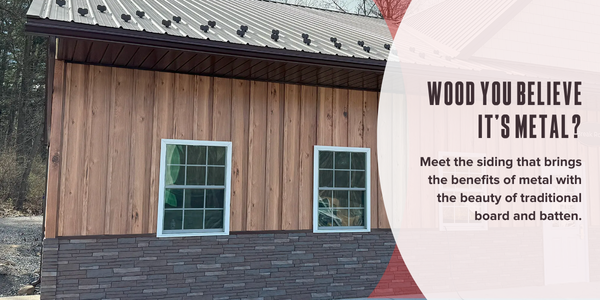UP TO THE MINUTE
Considerations for Your Metal Roof When Mounting Accessories to it

By Cass Jacoby, RCS Reporter.
Why it matters that your materials are compatible when mounting accessories to an exposed-fastened metal roof.
In order to preserve a roofs’ service life, it is crucial to install attachments without causing harm to the roof. The goal of this article is to help you make the best-informed decision on protecting an exposed-fastener (EF) roof.
S-5! released a series of articles about how to successfully install and mount solar panels, HVAC equipment, snow guards or other accessories to an EF metal roof. Here we will discuss the importance of material compatibility, and the range of factors S-5! asks contractors to consider to help prevent damage from occurring.
Material compatibility
First and foremost, it's important to know what kind of metal makes up your customer’s roof. This is because the material type of the EF roof is a key component to the long-term success of the project. S-5! stresses the importance of ensuring material compatibility because incompatible materials will compromise the entire roofing system. “Compatibility” involves both metallurgical chemistry as well as service life equivalence.
I bet you didn't expect a small chemistry lesson from a roofing article, but you want your materials to be compatible because of the chemical reactions that can happen.
Anodic metals (metals that release electrons) can’t mix with cathodic metals (metals that attract electrons) because they will have a corrosive reaction. For example, aluminum, zinc and coated steel are all corroded by lead, copper and their alloys because the former is anodic and the latter cathodic. You want to make sure that these two opposing categories stay separated; otherwise you risk the metals corroding.
To complicate things, the oxide layers created by many metals exhibit differing electro-chemistry than the parent metal that created them. Additionally, materials like treated lumber, which has copper salts can release cathodic ions onto the roof. Stucco masonry blocks and concrete can also leech alkalis that are corrosive to aluminum alloys.
Thus, you want to make sure the brackets you use to attach the rooftop accessories also will not create a corrosive interaction and are compatible.
Are you using the right screw and fastener for your job?
Another critical element of your customer’s roof is choosing the correct fastener for the job. Exposed fasteners are what their name says: exposed, meaning they are vulnerable to many environmental threats. Unless your screwheads are stainless steel or aluminum-zinc, they are subject to eventual corrosion.
If you are going to attach to metal structure, you want to use a self-drilling screw. S-5! recommends using a piercing point (non-drilling) metal-to-wood fastener if you are attaching to a wood purlin or deck. The same fastener is recommended when attaching a bracket to metal sheet only. EPDM washers and gaskets are strongly preferred over other rubber chemistries and they should be encapsulated by fastener and bracket design to protect them from ultra violet degradation.
Be mindful of the lifespan of your brackets and fasteners in relationship to the lifespan of your roof. You don't want a bracket to fail earlier than the roof or the equipment that you're attaching as that can compromise the system. That's why it's important to do your research and find the highest quality bracket and screw that are specifically designed and engineered to maintain total compatibility to your roof.
Conclusion
Today we covered how to protect an EF metal roof when you're mounting something onto it. Remember when you're mounting something to an EF roof to:
-
Check for material compatibility to avoid possible electro-chemical reactions
-
Use the correct fasteners
-
Make sure your brackets and their fastening will last as long as the roof
Learn more about S-5! in their RoofersCoffeeShop® Directory or visit www.S-5.com.




















Comments
Leave a Reply
Have an account? Login to leave a comment!
Sign In